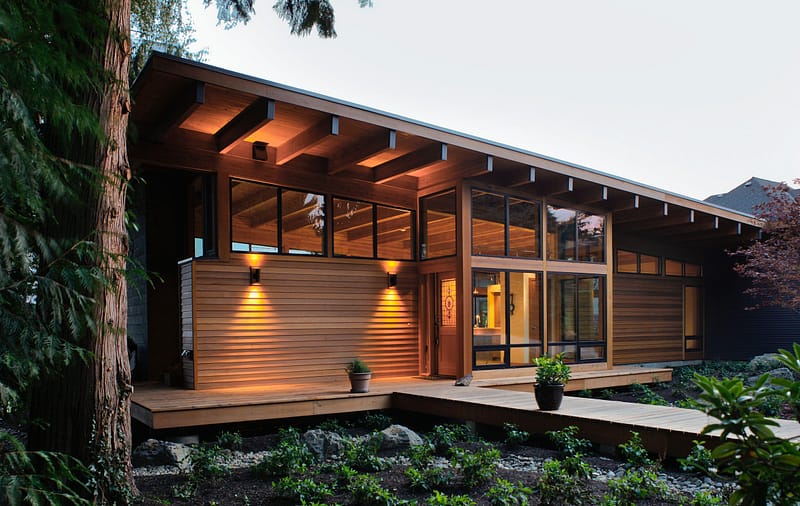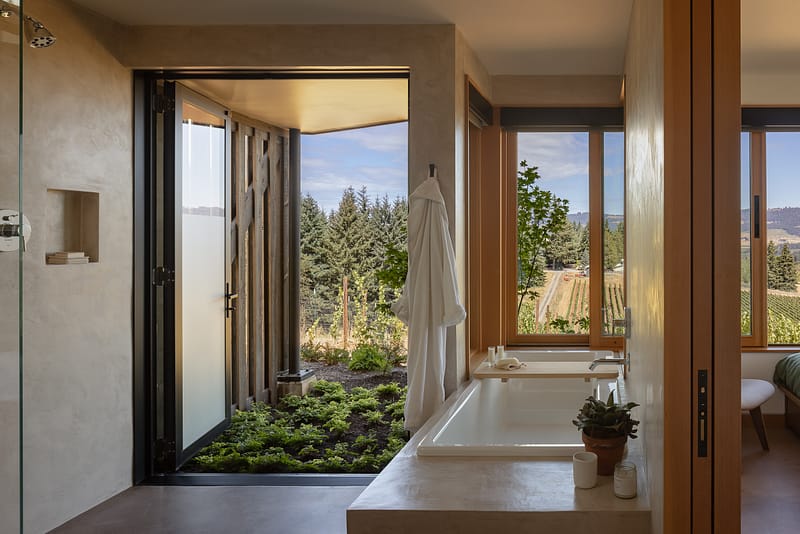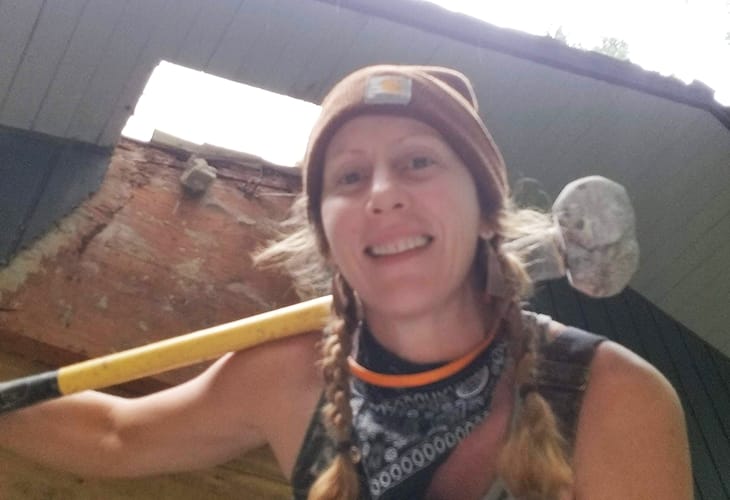Certified Passive House Consultant Skylar Swinford’s advice doubles as primer for Passive House design.
EDITOR’S NOTE: Last week an Architecture 101 student emailed us asking for “examples of passive energy design techniques in working homes” for a class project. Bam! Here’s Skylar’s response. It’s a nice primer on high performance design: short, instructive, right on the money, and well worth sharing here on Field Notes.
Hi Nick,
Start with a simple cube. Less surface area=Less heat loss. For example if you reduce surface area by half you cut heat loss in half.

Image from Passivhaus Institut
Make the wall 12″ thick minimum and the glass triple pane. Build the house around a mechanical core to reduce plumbing runs. In a typical house half the hot water energy is wasted by hot water left behind in the lines. South orientation with properly designed overhangs and exterior shading is key. Do not overglaze the walls. Floor to ceiling windows makes no sense except for aesthetics. No usable daylight is gained from windows below waist height. Don’t forget space for a heat recovery ventilator. Yes operable windows can be used for passive cooling, but “natural” or “passive” ventilation is no substitute for a highly-efficient balanced ventilation system with heat recovery.
Also thermal mass is overrated by yesterday’s “passive solar” crowd. The first priority is a well insulated and air-tight envelope. Thermal mass can help to a degree, but in a well designed low energy building such as a Passivhaus the benefits of going crazy with mass are minimal. Distributed mass, like an extra layer of drywall, would provide more benefit than adding concrete or something like a trombe wall. Also don’t forget: no thermal bridges. Foundations, balconies, etc need to be thermally isolated. No uninsulated steel or concrete should be allowed to penetrate the envelope.
I recommend reading this: The Passivhaus Handbook
Full disclosure, there’s a tension between designing something practical and designing something your art teachers will reward with high marks, but it can be done.
While designing I recommend keeping this quote in mind:
“I have found that all ugly things are made by those who strive to make something beautiful, and that all beautiful things are made by those who strive to make something useful.” – Oscar Wilde (1884)
Good luck!
-Skylar




